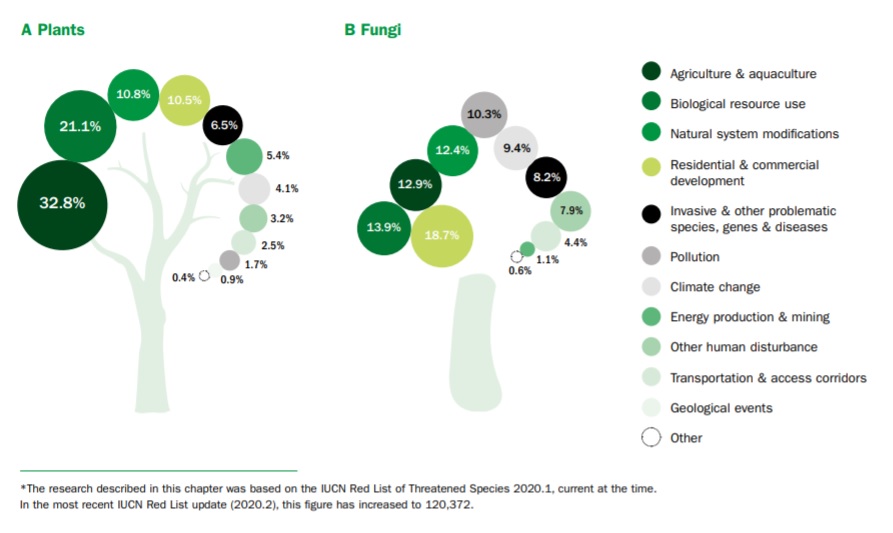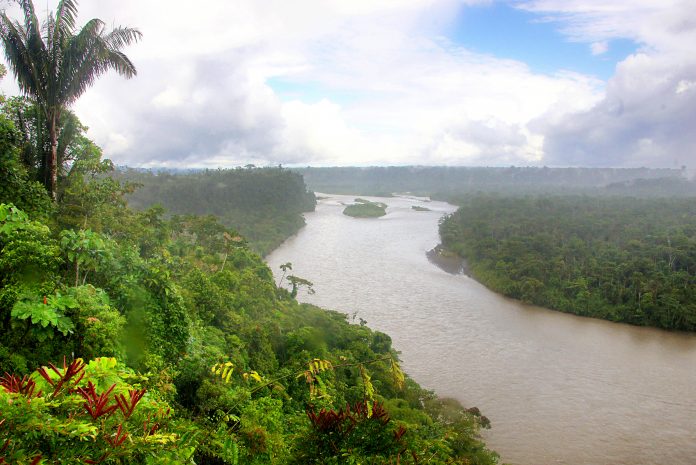A new study highlights that 40% of plant species are at threatened with extinction due to the continued destruction of our natural world
The ‘State of the World’s Plants and Fungi 2020’ report, which draws on the work of 210 scientists from 42 countries, shows a 20% increase from research published in 2016 which revealed that 20% of plant species were at risk of extinction.
It is not just plant species that are at risk from extinction. The study found that fungi are also highly susceptible to the actions of humans and their numbers are also declining rapidly, say scientists from the Royal Botanical Gardens, Kew, who published the report.
What is causing the decline in plants and fungi?
Entire plant and fungi populations have been eradicated in some parts of the world due to increasing deforestation rates to meet the rising demand for food, a rise in global emissions disrupting the climate system, new pathogens threatening our crops and our health, the introduction of non-native species and illegal trading.
Plants and fungi are the foundations for life on Earth, but the scientists said they are now in a race against time to find and identify species before they are lost.
Prof Alexandre Antonelli, director of science at the Royal Botanical Gardens, Kew, said: “We would be able not survive without plants and fungi – all life depends on them – and it is really time to open the treasure chest.”
The report tackles knowledge gaps and unlocks the known and potential benefits of fungi and plants for us and our planet.

So many species yet to be discovered
1,942 species of plants and 1,886 species of fungi were scientifically named for the first time in 2019, and many species remain unknown to science in the world’s wildest places.
It is suggested that more funding is needed to discover and conserve species that could provide solutions to some of humanity’s biggest problems, such as food insecurity and climate change, before they go extinct.
Certain species of plants and fungi can be used as medicines and biofuels that could even hold the answer for treatments for coronavirus and other infectious diseases.
“Every time we lose a species, we lose an opportunity for humankind. We are losing a race against time as we are probably losing species faster than we can find and name them,” Antonelli added.
Billions of people rely on herbal medicines as their primary source of healthcare, but the study found that 723 plant species used as treatments are threatened with extinction.
Melanie-Jayne Howes, research leader at RBG Kew, explained: “Only 7% of [known] plants have documented uses as medicines and therefore the world’s plants and fungi remain largely untapped as potential sources of new medicines.
“So, it is absolutely critical that we better protect biodiversity, so we are better prepared for emerging challenges to our planet and our health.”
Plants and fungi for food
It was found in the State of the World’s Plants and Fungi 2020 report that the number of plant species that humanity depends on for food is very small. This makes supplies vulnerable to changes in climate and new diseases, especially with the world’s population expected to rise to 10 billion by 2050.
More than 50% of the world’s people depend on rice, maize and wheat and just 15 plants provide 90% of all calories.
However, this doesn’t have to be the case, the researchers found that there are over 7,000 nutritious, robust, at low risk of extinction edible species of plant that could be used in the future to secure our food system. Currently only 6% of these plant species are grown at significant scale.
Potential future foods include the morama bean, a drought-tolerant South African and a species of pandan fruit that grows from Hawaii to the Philippines.
Stefano Padulosi, former senior scientist at the Alliance of Biodiversity International, commented: “The thousands of neglected plant species are the lifeline to millions of people on Earth tormented by unprecedented climate change, pervasive food and nutrition insecurity.
“Harnessing this basket of untapped resources for making food production systems more diverse and resilient to change should be our moral duty.”
The report follows the announcement by the UN that the world failed to reach any of the 20 biodiversity targets set ten years ago at the Aichi conference in Japan.
Setting conservation priorities requires detailed knowledge of biodiversity and threats. Targeting the knowledge gaps outlined in this report, the greatest of which are for fungi, can help inform conservation decisions.
Action is urgently needed to prevent species from going extinct and secure the future of these vital natural assets.
The report can be found here.











